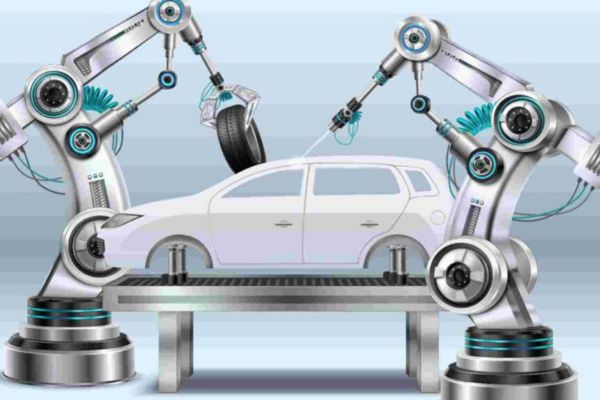More than 61% of traffic fatalities occur on Indian national and state roads, which make up just over 5% of all road length, according to a report by the Government of India. Every day, millions of cars traverse these roads, either handling the transportation of commodities valued at over $1 billion or serving as a means of transportation, mining, construction, and even public functions. Rising incidences of road accidents are likely to drive growth during the forecast period. In many ways, India’s fleet telematics business is still in its infancy, and vast portions of the addressable market are still mostly unexplored. However, the market is somewhat favored by government requirements like as AIS 140, and the adoption of fleet management solutions is increasing. Although advancements in the fleet management industry have been impeded by the worldwide recession linked to the current COVID-19 epidemic, these setbacks are anticipated to be brief. By 2025, there will be about 6.8 million fleet management systems installed, up from 3.5 million at the end of 2020, at a compound annual growth rate of 14.0 percent.
The Booming Logistics Industry in India
Presently, the logistics industry employs 2.2 crore people and contributes 5% of India’s GDP. The annual cost of handling 4.6 billion tons of goods in India is INR 9.5 lacs (USD 11421). These goods reflect a wide range of industries and products in the nation: agricultural accounts for 22% of the total, mining products for 39%, and commodities related to manufacturing for 39%. These commodities are primarily moved by trucks and other vehicles. The other modes of transportation include airways, pipelines, coastal, inland rivers, and railroads. According to industry reports, the Indian fleet management software market can be found at https://www.mordorintelligence.com.
ELDs and GPS in Fleet
Fleet technology like ELDs and GPS also make it feasible to more smartly and efficiently plan routes and assign the correct vehicles to the right jobs out in the field. This is done through the use of both algorithms and route optimization. For every driver, the technology can generate and incorporate backup plans in case their route is disrupted. Drivers can avoid accidents, road closures, and construction zones by using contingencies.
Fleet Management Software
Vehicle financing, vehicle maintenance, tracking and diagnostics, driver management, speed management, fuel management, and health and safety management are just a few of the many features that fleet management software offers. Since the Indian market for these solutions is still in its infancy, there are plenty of chances for sellers.
Temperature Monitoring
Fleets may make sure that goods are being carried securely and within predetermined temperature limits by using temperature monitoring technology to keep an eye on the temperature of their trailers and other cargo. Fleet owners can use this technology to receive real-time notifications in the event of a temperature alarm or a departure from predetermined parameters. Temperature-sensitive objects, such dangerous or perishable goods, can be kept at safe temperatures during transportation thanks to this technology, such dangerous or perishable goods, can be kept at safe temperatures during transportation thanks to this technology.
IoT in Fleet Industry
Because cloud offerings have more features, are more efficient, have a quicker time to market, and are less expensive than on-premise options, vendors are choosing them over on-premise options. IoT is crucial for empowering fleet managers, logistics managers, and drivers to make educated decisions almost instantly. This is made feasible by processing data at the edge, which is sometimes referred to as collecting and evaluating data as it is generated. IoT-enabled devices with built-in processing power are used to establish network communication between the fleet management, the cloud, and the car.
Asset Tracking
Physical assets like machinery, vehicles, and inventory are tracked and managed using asset tracking systems. It stops the loss of tools and freight. Drivers frequently leave equipment at a job site, such as pallet jacks, ladders, signal meters, and parcels. They have to make further journeys to pick these up. Even worse, if they completely lose the instrument, they run the risk of postponing the project or task. Businesses can track their assets around-the-clock thanks to modern real-time asset monitoring, which improves fleet visibility. Real-time fleet monitoring enabled by telematics tracking technologies provides immediate updates on asset locations, whereas traditional asset management techniques can cause delays. This is crucial for logistics organizations operating huge fleets, since every minute of delay effects customer satisfaction. Businesses that use wireless asset monitoring systems improve route planning, which lowers fuel costs, and cut operational inefficiencies by more than 30%.
Real-time fleet monitoring is becoming more and more popular across industries; by 2026, the fleet management software market is projected to grow by 18% a year to reach USD 42.9 billion. Proactive decision-making is made feasible by real-time monitoring, which gives managers quick access to asset location, conditions, and operational indicators.
RFID Tracking System
Better asset utilization is ensured by the exact asset location tracking capabilities provided by both GPS and RFID tracking systems. RFID enables quick asset identification, even in remote locations, while GPS systems offer real-time location updates. For example, a construction company can use RFID to track equipment that is spread across multiple locations, reducing the amount of lost tools and equipment downtime. These technologies work together to improve security and accountability, particularly in sectors with valuable assets.
EVs Taking Over
In the fleet management sector, electric vehicles (EVs) improve performance, cut emissions, and minimize operating costs. Smart charging systems, vehicle-to-grid (V2G) connectivity, and the utilization of electric trucks and buses are all necessary for the efficient administration of EV fleets. In order to reduce energy costs and system impacts, smart charging solutions improve EV charging patterns. EVs may now provide the grid more services like peak shaving and frequency management thanks to V2G connectivity. Electric buses and trucks are appropriate for public transit and urban deliveries. Their lower levels of pollution and noise are the explanation. Additionally, startups are promoting the use of EV fleets by creating solutions like wireless charging and creative leasing and financing schemes.
Big Data And Analytics
Big data and analytics are used in fleet management to help gather, process, and analyze vast amounts of data from fleet vehicles. Fleet managers can use this data to inform both short- and long-term strategic choices about asset usage and customer satisfaction. Predictive maintenance, driver behavior analysis, route optimization, fuel efficiency, and pollution monitoring are some of the solutions that startups are creating. These solutions offer safe, real-time data transfer and analysis through the use of technologies like blockchain, 5G, edge computing, and machine learning.
Fleet-as-a-Service
A single platform is used by Fleet-as-a-Service (FaaS) to combine multiple forms of transportation. This gives consumers access to mobility choices that meet their requirements. On-demand services like ride-hailing, car-sharing, and micro-mobility are provided by the shared mobility fleets. Additionally, it helps fleet managers to maximize vehicle use, cut expenses, and improve customer happiness. Cloud computing, blockchain, and artificial intelligence are being used by FaaS businesses to develop intelligent fleet solutions. FaaS is revolutionizing mobility and transportation in the future, opening up new possibilities for both users and fleet management.

















